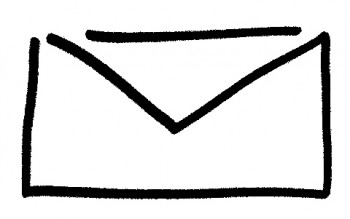
Email is invaluable for communicating with customers, with its effectiveness significantly increased when care is taken to adapt to the new expectations of this powerful form or communication.
Many of the web marketing practices you are using to get your online content read and acted upon will also work equally well to do the same with your customer emails.
This should not be surprising, as you are dealing with expectations and human behavior in both situations.
It is important to recognize that your customer has given you permission to interrupt them with email when you have something valuable to communicate, and that alone is why you should treat every single email correspondence with care.
#1 – Open with Friendly and Familiar
The inbox is sacred space and should be treated as such to avoid being ignored or even blocked. So, opening with a friendly greeting significantly increases the odds that it will be favorable.
Also, keep in mind that business is now personal.
Since business in my entrepreneurial world is informal, I prefer to simply open with “Hi” and their first name.
In addition to that, whenever possible try to include a little something familiar that reminds them of your personal relationship.
#2 – Shorter is Always Better
To send lengthy emails is to disrespect the medium. When you send a lengthy email (or social media post for that matter) you are saying your message is so important that its recipient should drop everything to give you their full attention.
That’s crazy!
People have families, bosses, and other customers to communicate with in addition to you. Respect that and take the time to send short emails that are ideally focused on only one topic.
If there are more than a few items that you must address in one email, organize them by grouping related items, and then numbering them in a list. When you make the effort to do this, you send a signal that you respect their time, and that encourages a prompt and thoughtful response.
#3 – Deliver Value Quickly
In the early days of email, we all excitedly looked forward to receiving them.
Now that email is integral to our business and personal lives, it is considered to be an interruption.
For this reason, if you expect your emails to be well received, deliver value and do it quickly. Here are 5 methods for providing value. Consider using more than one in your emails.
- An important update
- A timely alert
- A kind thought
- Useful news or practical information
- Step-by-step instructions for easily fulfilling your call-to-action
That last one is my favorite.
#4 – Carefully Choose Subject Keywords
Many of us will spend nearly as much time choosing the title of our blog posts as we do writing the article because we know the right keywords will get it read by our audience. That also holds true for Google and the other search engines. Take the same approach with your emails.
People are skimming through their inbox just as they are the web. So, use keywords to clearly address the topic of the email. Then be sure the body of the message delivers on that promise from the very first line.
Also, be sure to avoid any special characters within the subject line such as exclamation points. Not only can this push your email into their junk folder, it tends to look like you are trying a little too hard.
#5 – Open and Close with Your Call to Action
The challenge with emails (and especially email marketing) is having them arrive safely within inboxes as opposed to spam folders so that they get opened and read. About 1/2 of all emails accomplish those two objectives.
So, when you do beat the odds, it should be crystal clear what actions are expected of the recipient.
Suggestions are not calls-to-action. State what you want in no uncertain terms. For example, studies prove that the surest way to get your content retweeted on Twitter is to simply state: Please retweet. Simple enough, right?
Like any other form of communication, using email effectively is a skill that will improve with practice, and the application of these basic tips are sure to help.
#6 – Leave the Back Door Open
You cannot always get what you want for any number of reasons. It may happen that the recipient wants to help but the timing just isn’t right.
Don’t compromise the relationship. Always provide an easy “out”.
For example, I recently made a request that closed like this: I’ll greatly appreciate your help, and will also understand if this doesn’t feel right for you.
Actually, just as I made two calls-to-action; I also twice opened the door to leave them a means for gracefully backing out.
#7 – Follow-Up to Yes or No
Emails often get lost or forgotten, especially because we all get more of them than we can usually handle.
Too many people make the assumption that no response is a rejection. Wrong! As LinkedIn co-founder Reid Hoffman suggests: “Your goal is to persist until you get a specific yes or a no.”
This takes some guts because most people do not like rejection. If you follow the aforementioned steps when you follow-up, you will discover that persistence does indeed pay off.
Now over to you. Let’s work together on this.
Please share your practices for getting a response to your emails in a comment below.
If that’s not your thing, take a second to click one of the buttons below to share with your tribe.
About the Author: Jeff Korhan, MBA, helps mainstream small businesses create exceptional customer experiences that accelerate business growth. Get more from Jeff on LinkedIn, Twitter and Google+.
Jeff is also the author of Built-In Social: Essential Social Marketing Practices for Every Small Business – (Wiley 2013)



